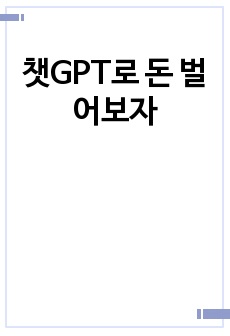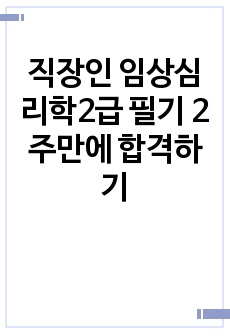* 본 문서는 배포용으로 복사 및 편집이 불가합니다.
서지정보
ㆍ발행기관 : 한국음악치료학회
ㆍ수록지정보 : 한국음악치료학회지 / 7권 / 2호
ㆍ저자명 : 이숙
목차
1.방법
2.결과
3.논의 및 결론
한국어 초록
이 연구는 정신지체 아동과 일반아동의 운율 특성을 비교하여 정신지체 아동들에게 적절한 운율 사용을 통해서 의사소통 기술을 향상시키기 위한 기초 자료를 마련하고자 시행되었다. 연구 대상자는 정신지체 아동 20명과 일반아동 20명으로, 표현 언어 진단 기준에 따라 18개월(한 단어 수준), 24개월(두 단어 수준), 36개월(세 단어 수준) 48개월(문장 수준)의 4개 집단으로 분류되었다. 10개 의사소통 항목(물어보기, 부르기, 대답하기, 인사하기, 요구하기, 대답요구, 거부하기, 감정표현, 주장하기, 청유)의 발화를 CSL 음성분석기로 분석하여 음도, 강도, 지속시간의 범위, 음도 곡선 형태, 마지막 음절의 억양 특성을 비교하였다. 연구결과는 다음과 같다. 첫째, 18개월(한 단어 수준) 정신지체 집단과 일반아동 집단 간의 음도, 강도, 지속시간 범위는 차이를 보이지 않았다. 그러나 음도 곡선 형태에서 인사하기, 요구하기, 대답요구, 거부하기, 감정표현, 청유의 6개 항목에서는 두 집단 간에 차이를 보였는데, 마지막 음절의 억양에 있어서는 두 집단 모두 L(수평적 곡선)을 가장 많이 사용하고, 두 집단 모두 R(상승하는 곡선)을 사용하는 것으로 나타났다. 둘째, 24개월(두 단어 수준) 정신지체 집단과 일반아동 집단을 비교한 결과, 의사소통 10개 항목 모두에서 정신지체 집단이 일반아동 집단보다 낮은 음도와 낮은 강도를 사용하는 것으로 나타났다. 음도 곡선 형태에서도 청유를 제외한 나머지 9개 항목에서 두 집단 간에 차이를 나타냈다. 또한 마지막 음절 억양에 있어서는 두 집단 모두 F(하강하는 곡선)를 가장 많이 사용하였으나, 일반아동 집단이 RF(상승했다가 다시 하강하는) 곡선 형태를 더 많이 사용하여 의사소통 의도를 표현하는 것으로 나타났다. 셋째, 36개월(세 단어 수준) 아동 두 집단을 비교한 결과, 정신지체 집단이 인사하기를 제외한 나머지 9개 항목에서 일반아동 집단보다 높은 음도를 사용하였으며, 지속시간에서도 주장하기를 제외한 9개 항목에서 더 긴 시간을 사용하는 것으로 나타났다. 마지막 음절 억양에 있어서 정신지체 집단은 24개월 시기와 같은 형태(F>L>R>RF)를 나타냈다. 넷째, 48개월(문장수준) 아동 두 집단을 비교한 결과, 정신지체 집단이 6개 항목(물어보기, 부르기, 대답하기, 인사하기, 거부하기, 주장하기)에서 일반아동 집단보다 높은 음도를 사용하였는데, 일반아동의 경우 높은 주파수를 가지는 자음에서는 음도가 점차 낮아지는데 반해, 정신지체 집단은 36개월 시기와 똑같은 높은 음도를 유지하였다. 마지막 음절 억양에 있어서 정신지체 집단은 24개월 이후 지속적으로 같은 형태인 F>L>R>RF 억양을 산출하는 반면, 일반아동 집단은 다양한 변화(F>RF>L>R)를 통해서 의사소통 의도를 표현하는 것으로 나타났다.
영어 초록
The purpose of this study was to compare prosody characteristics between mentally retarded children and normal children and suggest preliminary materials to improve mentally retarded children's communication ability by using proper prosody. The subjects who participated in this study were 20 mentally retarded children and 20 normal children in 4 groups as 18-month-old(one-word stage), 24-month-old(two-word stage), 36-month-old(three-word stage) and 48-month-old(sentence stage), and examined the utterance of 10 communication functions(questioning, calling, answering, greeting, requesting, asking, protesting, emotion expressing, insisting and suggesting) by CSL(Computerized Speech Laboratory) to compare their pitches, intensities, duration ranges, pitch contour patterns, and characteristics of final syllable intonation. The results were as follows; First, There was no difference between 18-month-old(one-word stage) mentally retarded and normal children in their pitches, intensities and duration ranges, while they showed the dissimilarity of pitch contour pattern in 6 functions, greeting, requesting, asking, protesting and suggesting. For the final syllable intonation, both groups mostly used L(flat contour) and both groups used R(rising contour). Second, in 24-month-old group(two-word state), mentally retarded children used lower pitches and intensities than normal children in all of 10 communication functions, and two groups showed the pitch contour pattern differences in every function except suggesting. In the normal group, high frequency consonant (ㅊ, ㅎ, ㅈ,ㅍ, ㅅ, ㄱ) was produced with high pitch while mentally retarded group produced with low pitch and intensity. For the final syllable intonation, both groups mostly used F(falling contour) and the normal groups used RF(rising and falling contour) more. Third, in 36-month-old group(three-word state), the mentally retarded used higher pitches than the normal in 9 functions which excludes greeting, and took longer duration to operate 9 functions which excludes insisting. In 36-month-old groups, the mentally retarded group used higher pitches except the greeting and took more time except insisting. The mentally retarded group showed higher pitches(usually found in 24-month-old normal children) in appearance of /ㅅ, ㅈ, ㄱ/ to indicate they were retarded in phoneme utterance of high frequency. The retarded group seemed similar to the 24-month-old(F>L>R>RF) in the intonation of the final syllable; yet, they expressed their purposes of communications more naturally by final syllable intonation. Fourth, in 48-month-old group(sentence state), the mentally retarded group used higher pitches than normal children in six functions(questioning, calling, answering, greeting, protesting, and insisting) and kept high pitches(1000Hz) as same as the mentally retarded 36-month-old group while normal children decreased their phoneme utterances in high frequency(800-900Hz). Moreover, both groups used flat or falling contour in a choice-interrogative complex sentence and showed unique pitch variations in sentence level stressed phrases with four syllables and less that were different from adults'.
참고 자료
없음




